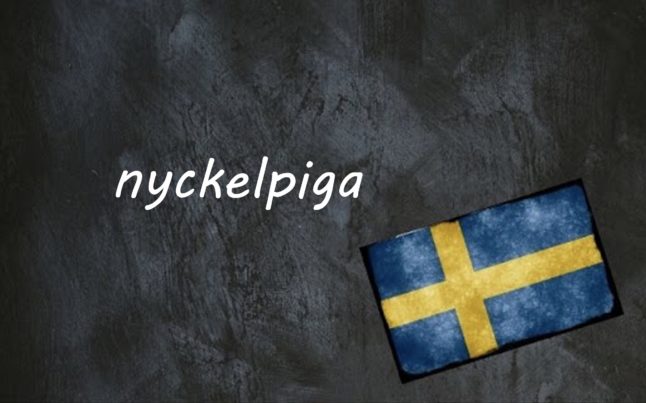At a certain point in the spring, you'll see bars, cafes and restaurants setting up chairs and tables out on the pavement: this is the uteservering, which you could translate as 'outdoor terrace' or 'pavement cafe'. You can find a list of 12 of The Local's Stockholm favourites here.
You can break the word down into ute (outdoors) and servering (which means both 'restaurant/eatery' and 'the act of serving'). It covers everything from rooftop bars to cafe courtyards to kiosks in parks with tables and chairs, and they usually open from around early April to September: regulations usually define the uteservering season as between April 1st and October 15th, so outside those dates it may not be allowed.
Even on chilly days probably best spent inside, you'll see locals stubbornly wrapped in a blanket (provided by the restaurant) and eating their meal under an outdoor heater rather than waste a moment of daylight.
These days, sipping a cocktail or cold beer at one of these spots is an integral part of Swedish summertime, which fits into the Scandinavian mentality of making the most of those long summer days and nights.
But it wasn't always the case.
The very first uteservering in Sweden is said to have been opened in Gothenburg in the mid-19th century. But over the following century, strict laws around alcohol meant a lot of restrictions on restaurants with alcohol permits. Far fewer restaurants were allowed to serve beer, wine and spirits, and even in those, they had to be drunk indoors.
It wasn't until the 1980s that the trend started up again, perhaps influenced by increasing travel overseas and Swedes experiencing cafe terrace culture in places like France and Italy.
In the early 1990s both Gothenburg and Malmö introduced permits at a municipal level for uteserveringar. When smoking was banned inside restaurants about ten years later, new permits were introduced allowing year-round outdoor areas.
So next time you're enjoying an afterwork drink at your favourite uteservering, you'll know the history of this relatively new Swedish tradition.
MORE SWEDISH SUMMER WORDS:
- Swedish word of the day: sommarstängt
- Swedish word of the day: loppis
- Swedish word of the day: utedass
Examples
Det är så mysig att ta en öl på en uteservering i solskenet
It's so nice to have a beer on an outdoor terrace in the sunshine
De flesta uteserveringar öppnar den 1e april
Most outdoor terraces open on April 1st



 Please whitelist us to continue reading.
Please whitelist us to continue reading.
Member comments